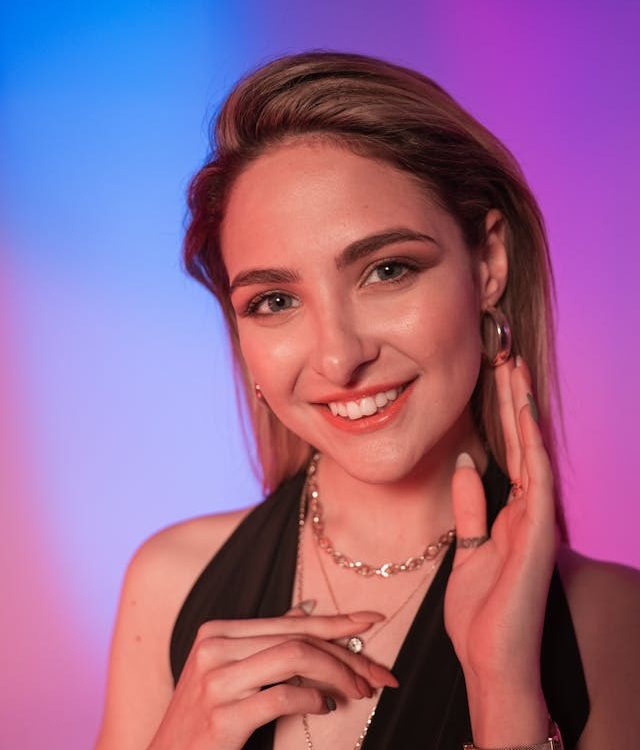Over time, no matter how well you care for your skin, fine lines and sun spots start to appear leaving you with an uneven skin tone. While skincare products can help, they can’t always undo the effects of aging, sun exposure, and collagen loss. That’s where laser skin resurfacing can help, by smoothing wrinkles, fading discoloration, and restoring a fresh, even complexion.
This non-surgical procedure works by using targeted laser energy to remove damaged skin cells and, like microneedling, stimulates collagen production. As the skin heals, it becomes smoother, firmer, and more radiant. Let’s look at how the process works and what kind of results you can expect.
To find out whether laser skin resurfacing is right for you, contact Dr. Malena Amato and Dr. Marie Somogyi at (512) 501-1010. As an experienced, board-certified eyelid and facial plastic surgeon, she will happily discuss your options with you.
What Is Laser Skin Resurfacing and How Does It Work?
Laser skin resurfacing removes damaged skin cells and boosts collagen production for a smoother, more youthful appearance. Using a specialized laser, it breaks down fine lines, sun spots, and uneven texture, allowing healthy new skin to take its place. The result is a brighter, firmer complexion with long-lasting improvements in tone and texture.
This treatment uses the advanced AcuPulse CO₂ fractional laser, which targets damaged cells while leaving the surrounding skin for faster healing. Unlike traditional lasers, it minimizes irritation and aims to improve overall skin quality.
Here are the top 5 laser skin resurfacing benefits that explain why so many people turn to this treatment for skin rejuvenation.
Benefit #1: Diminishing Fine Lines and Wrinkles
By stimulating collagen production, laser skin resurfacing tightens and firms the skin, smoothing out fine lines and wrinkles. This process reduces crepey areas and enhances overall skin texture, resulting in a more youthful appearance.
Benefit #2: Improving Skin Tone and Texture
Laser skin resurfacing removes damaged and discolored skin cells, reducing rough patches and revealing healthier skin beneath. This leads to a more even complexion and a noticeable improvement in skin tone and texture.
Benefit #3: Reducing Acne Scars and Blemishes
Laser treatments target the bacteria that cause acne, helping to reduce breakouts while tightening pores and soothing inflammation. They also gradually break down both acne and surgery scar tissue, allowing healthy skin to take its place and diminishing the appearance of scars over time.
Benefit #4: Stimulating Collagen Production for Younger-Looking Skin
Laser resurfacing increases the production of new collagen fibers, improving skin firmness and elasticity. This helps reduce sagging and restores a naturally younger-looking appearance, giving the skin a more supple and resilient quality.
Benefit #5: Minimizing Sun Damage and Age Spots
Medical lasers effectively treat skin discoloration caused by UV exposure or hormonal changes. By removing pigmented cells responsible for sunspots and melasma, laser resurfacing restores a more even skin tone and reduces the visible signs of sun damage.
How Many Laser Skin Resurfacing Sessions Are Needed for Optimal Results?
Most patients see noticeable results after just one laser resurfacing session, with skin texture continuing to improve over several months. For deeper wrinkles, acne scars, or more significant skin concerns, a second treatment may be recommended about six months later. While some patients opt for multiple sessions to treat specific areas, many achieve a smoother, more youthful complexion after a single treatment.
Is Laser Skin Resurfacing Right for Your Skin Type?
Laser skin resurfacing can be effective for many skin types. However, results depend on factors like skin tone and medical history. If you have darker skin, you may be at a higher risk of pigment changes, which isn’t ideal. Treatments like skin-lightening creams or peels can help if discoloration occurs.
Is Laser Skin Resurfacing Painful?
Laser skin resurfacing is generally well-tolerated. A topical anesthesia is applied before the procedure to minimize discomfort. You may experience a little redness and swelling for up to 48 hours after the treatment, but your doctor will provide you with the medication and ointment you’ll need for a quick and comfortable recovery.
Laser Skin Resurfacing vs Microneedling
Both laser skin resurfacing and microneedling are designed to improve skin quality, but they work in different ways and target different concerns. Laser resurfacing removes damaged outer skin layers, making it ideal for treating deep wrinkles, pigmentation issues, and acne scars.
Microneedling, on the other hand, stimulates collagen production beneath the skin without removing the top layer. It’s ideal if you want skin tightening, improved texture, and minimal recovery time. Microneedling is generally suitable for all skin types, making it a great option if laser resurfacing isn’t ideal for your skin type.
Where Can I Get Laser Skin Resurfacing, Austin, TX?
You can have your laser skin surfacing, as well as other medical procedures at Eyelid & Facial Plastic Surgery Associates in Austin, TX. To learn more, please contact us and our team will provide you with all the information you need.
